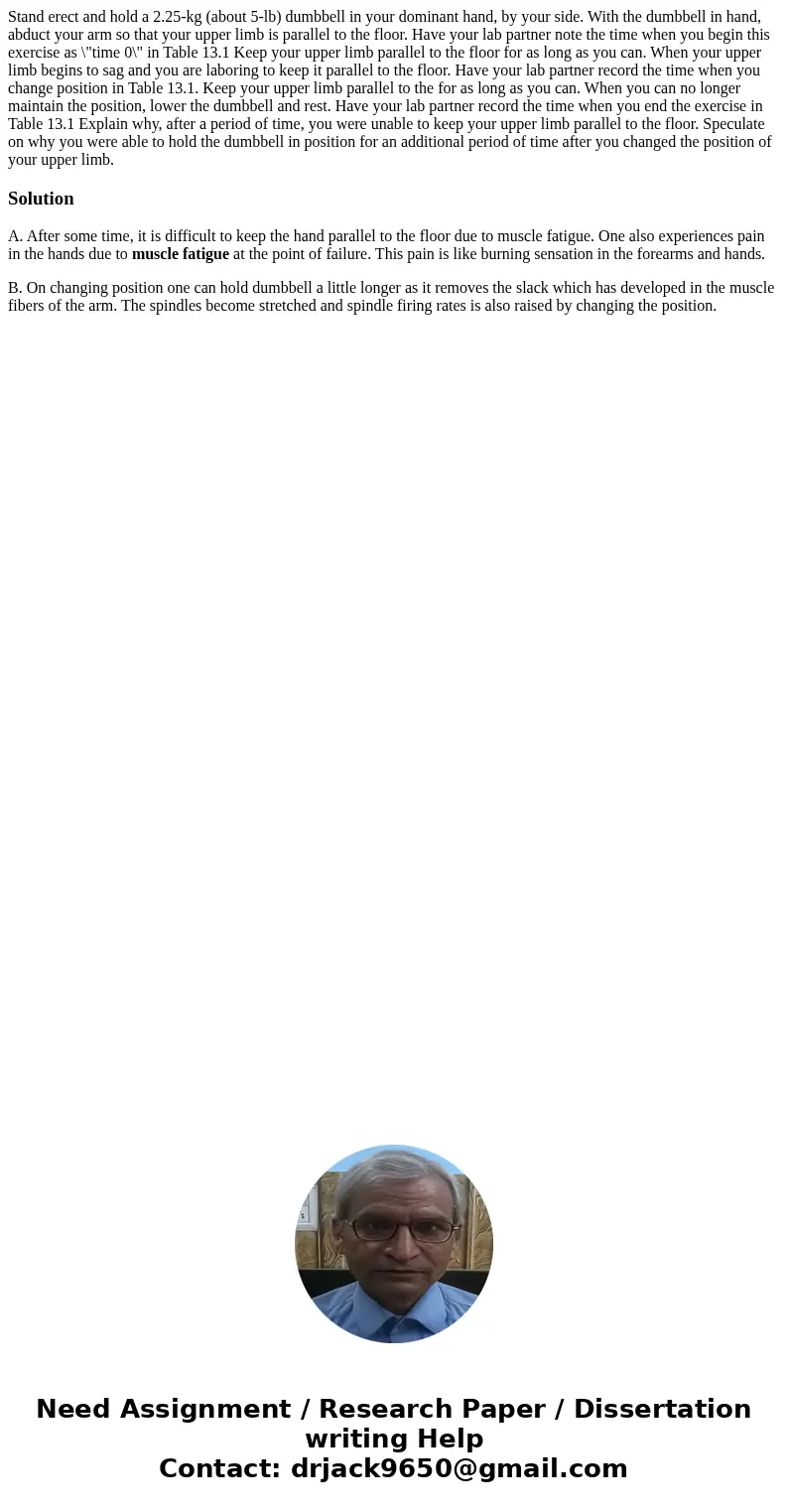Stand erect and hold a 225kg about 5lb dumbbell in your domi
Stand erect and hold a 2.25-kg (about 5-lb) dumbbell in your dominant hand, by your side. With the dumbbell in hand, abduct your arm so that your upper limb is parallel to the floor. Have your lab partner note the time when you begin this exercise as \"time 0\" in Table 13.1 Keep your upper limb parallel to the floor for as long as you can. When your upper limb begins to sag and you are laboring to keep it parallel to the floor. Have your lab partner record the time when you change position in Table 13.1. Keep your upper limb parallel to the for as long as you can. When you can no longer maintain the position, lower the dumbbell and rest. Have your lab partner record the time when you end the exercise in Table 13.1 Explain why, after a period of time, you were unable to keep your upper limb parallel to the floor. Speculate on why you were able to hold the dumbbell in position for an additional period of time after you changed the position of your upper limb.
Solution
A. After some time, it is difficult to keep the hand parallel to the floor due to muscle fatigue. One also experiences pain in the hands due to muscle fatigue at the point of failure. This pain is like burning sensation in the forearms and hands.
B. On changing position one can hold dumbbell a little longer as it removes the slack which has developed in the muscle fibers of the arm. The spindles become stretched and spindle firing rates is also raised by changing the position.

 Homework Sourse
Homework Sourse